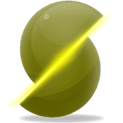 | |
 | |
| Original author(s) | Alessandro Ranellucci |
|---|---|
| Stable release | 1.3.0 / May 10, 2018 [1] |
| Repository | |
| Operating system | Microsoft Windows, Mac OS X, Linux |
| Type | 3D printer slicing application |
| License | GNU AGPL |
| Website | slic3r |
Slic3r is free software 3D slicing engine for 3D printers. It generates G-code from 3D CAD files (STL or OBJ). Once finished, an appropriate G-code file for the production of the 3D modeled part, or object is sent to the 3D printer for the manufacturing of a physical object. [2] [3] As of 2013, about half of the 3D printers tested by Make Magazine supported Slic3r. [4]
Contents
Prusa Research maintains an advanced fork called PrusaSlicer. [5] [6]
SuperSlicer is a further fork of PrusaSlicer. [7]